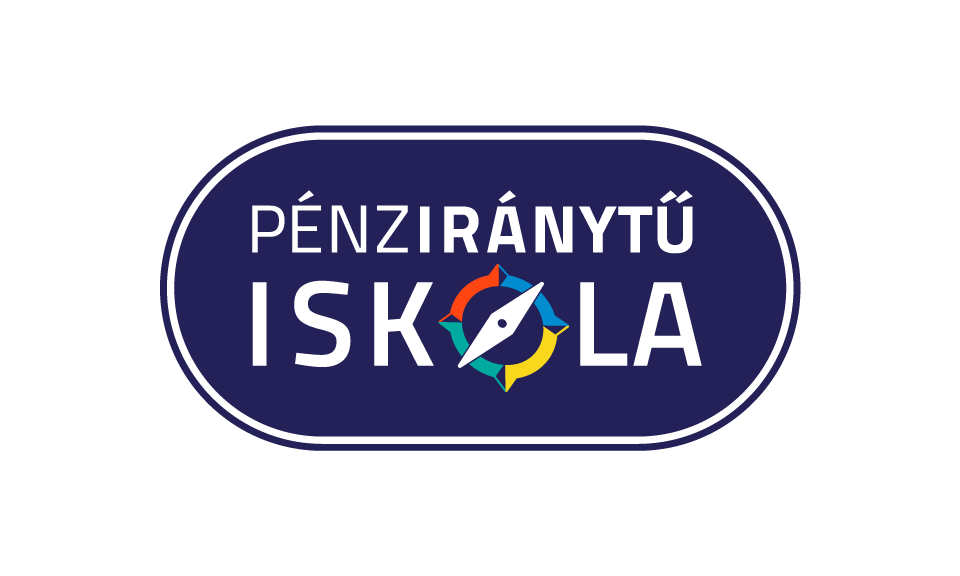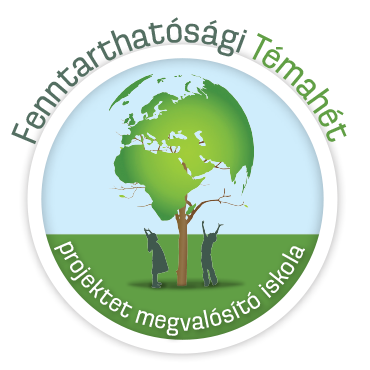Iskolatörténet
nostra scuola
Un po'di storia della nostra scuola
1855-1897:
L'epoca della scuola media inferiore (per gli studenti dai 10 ai 14 anni).
1855:
I genitori del luogo mettono su un'associazione privata e affidano a János Breznyík l'istruzione dei loro figli.
1856:
L'associazione é accolta sotto il patronato e il controllo della congregazione presbiteriana Luterana locale.
1858:
Un pastore ausiliario proveniente Da Orosháza, Sámuel Mókry rileva la direzione della scuola superiore. Il presbiteriato ecclesiastico fornisce il suo patronato anche alla scuola privata Soma Styaszny. La validitá delle pagelle é verificata dalla scuola secondaria Szarvas.
1857:
Il governo attuale chiede un prestito durante la geurra di Crimea. Gli interessi sono resi disponibili alla scuola luterana a condizione di mantenere una scuola secondaria in 4 classi specializzata nelle scienze. A quel tempo la parola "scienze" significava insegnare il Latino classico e dedicare piú tempo al disegno, alla lingua slovacca, alla matematica e alle lingue straniere moderne.
1858:
Si mette su una Fondazione Scolastica. I documenti di fondazione affermano che i fondatori vogliono ricordare in eterno l'anno della nascita di Rudolf, figlio dell'imperatore e re Ferenc József I.
1859-60:
Nella scuola ci sono 43 studenti. Usano la casa del pastore ausiliario come aula.
1860:
La scuola media inferiore si espande in 4 classi.
1864:
La vecchia casa del dottore del distretto comunitario é affidata dal villaggio cosí la scuola puó utilizzare l'edificio. (Oggi é una scuola professionale in Baross utca).
1865:
János Horváth é incaricato di dirigere la scuola che é principalmente un'istruzione autofinanziata. É gestita con gli interessi ricevuti dalla Fondazione e con gli onorari delle lezioni. Il numero degli studenti che studiano nelle 4 classi non supera i 100.
1867:
Il formato dell'insegnamento viene gradualmente modificato verso un sistema "un insegnante per materia". Negli anni precedenti un solo insegnante pensava a tutte le materie di una classe.
1884:
In primavera gli studenti raccolgono il denaro per le spese della costruzione dell'agognato nuovo edificio scolastico.
1885:
Donazioni per la costruzione del nuovo edificio vengono elargite da generose societá.
1886-1892:
Il nuovo edificio scolastico é completato. (Oggi é la vecchia parte della scuola professionale in Baross utca). Al momento il numero degli studenti é 153.
1896:
Nell'anno del 1000o anniversario dello Stato Unghgerese la scuola riceve un sussidio governativo per il mantenimento e per i costi operativi. Diverse fondazioni e alargizioni private aiutano comprare il materiale necessario e a sostenere gli studenti bisognosi. Nel cortile della scuola vengono piantati 7 alberi di sicomoro. Poco dopo il preside János Horváth comincia a scrivere la storia della scuola ma presto si ammala, lasciando al preside János Bukovszky. Il compito di continuare il lavoro.
1899:
L'edificio scolastico che é tuttora in funzione é completato secondo i progetti del famoso architetto Ignác Alpár.
1900. október 18.:
Cerimonia d'inagurazione del nuovo istituto. La scuola prende il nome di Rudolf.
1897:
La scuola diventa una scuola superiore composta da 8 classi (per studenti dai 10 ai 18 anni).
1897-1948:
L'epoca della "Scuola Secondaria Luterana Rudolf di Credo Asburgico".
1899-1900:
Nella scuola secondaria a 8 classi i 372 studenti assistono a 28-30 lezioni a settimana.
1903:
Gli studenti della scuola secondaria organizzano un concerto di beneficenza per raccogliere denaro destinato al capitale iniziale della Societá Sportiva e ad acquistare la sua bandiera.
1904:
L'elettricitá é installata nel ginnasio.
1912:
Le ragazze sono ammesse per la prima volta nella storia della scuola come privatiste che attendono agli esami alla fine dell'anno accademico.
1914:
Durante la I Guerra Mondiale, sotto l'occupazione rumena nell'edificio scolastico viene installato un ospedale militare.
1916-36:
Il dott. Lajos Rell diventa preside della scuola.
1917-18:
La scuola di disquisizione letteraria prende il nome di Géza Gyóni.
1921-22:
Vengono tenuti i primi coloqui. Kálmán Vidovszky, l'insegnante di religione fonda i gruppi scout della scuola.
1926:
L'associazione Alunni nasce in questo periodo.
1932:
La rivista "Vita studentesca di Csaba" é pubblicata per prima volta e 15 numeri vengono venduti nei due anni seguenti.
1936-45:
Samuel Palotai é preside.
1945-1949:
Il dott. Lajos Szeberényi é preside.
1948. június 18.:
La scuola confessionale diventa proprietá dello stato.
1992:
Cominciano trattativi concernenti la Chiesa per tornare alla sua vecchia proprietá.
1993:
La Scuola Superiore Luterana di Békéscsaba entra nella sua nuova proprietá.
school history
A composite of our school history
1855-1897:
The period of the junior secondary school (for students aged 10-14).
1855:
The local parents establish a private association and they entrust János Breznyík with the education of their sons.
1856:
The association is taken under the patronage and control of the local Lutheran congregational eldership.
1858:
An assistant minister from Orosháza, Sámuel Mokry takes over the leadership of the secondary school. The church eldership provides its patronage with Soma Styaszny's private school as well. The validity of the annual school reports is verified by Szarvas Secondary School.
1857:
The present goverment takes a loan during the Crimean war. The interest is made available to the Lutheran church under the condition of maintaining a 4-grade secondary school specialising in sciences. At that time the word "sciences" meant teaching classical Latin and devoting more time to drawing, the Slovak language, mathematics and contemporary foreign languages.
1858:
Establishing a School Foundation. The foundational document states that the founders want an everlasting reminder of the birth year of Rudolf, son of emperor and king Ferenc József I.
1859-60:
There are 43 students at the school. They use the assistant minister's house as a classroom.
1860:
The secondary junior school is expanded into 4 grades.
1864:
The former community district doctor's house is rented from the village so that the school can use the building. (Today it is a vocational school in Baross street.)
1865:
János Horváth is charged with directing the school, which is basically a self- maintaining institution. It is run by the interest received from the Foundation and tuition fees. The number of the students studying in the 4 grades does not surpass 100.
1867:
The teaching format is gradually changed into a "one teacher - one subject" system. In previous years one teacher taught all the subjects to the class.
1884:
In the spring the students raise money for the expenses of the hoped-for new school building.
1885:
Donations for the new school building are given by the generous public.
1886-1892:
The new school building is completed. (Today it is the old part of the vocational school in Baross street.) The number of students at this time is 153.
1896:
In the year of the 1000th anniversary of the Hungarian state the school receives a government subsidy for maintenance and operational costs. Different foundations and private endowments help to buy the necessary equipment and support the needy students. In the school- yard 7 sycamore trees are planted. Shortly thereafter headmaster János Horváth begins writing the school history but soon becomes ill, leaving headmaster János Bukovszky to complete the work.
1899:
The school building, which still functions today, is completed according to the blueprints of the famous architect Ignác Alpár.
1900. október 18.:
The opening ceremony of the new building. The school takes on the name of Rudolf.
1897:
The school becomes a secondary school including 8 grades. (For students aged 10 to 18.)
1897-1948:
The period of "Augsburg Credo Lutheran Rudolf Secondary School".
1899-1900:
In the 8-graded secondary school the 372 students have 28-30 lessons a week.
1903:
The secondary school students organise a charity concert and raise money to start capital for the Sports club and purchase its flag.
1904:
Electricity is installed in the gymnasium.
1912:
Girls are admitted for the first time in the history of the school as private students who take exams at the end of the academic year.
1914:
During World War I., under the Romanian occupation a military hospital is established in the school building.
1916-36:
Dr. Lajos Rell becomes Headmaster of the school.
1917-18:
The school literary and debate society takes on the name of Géza Gyóni.
1921-22:
The first parents' meetings are held. Kálmán Vidovszky, the religious education teacher establishes the scout troop of the school.
1926:
The Alumni Association starts at this time.
1932:
The "Student's Life of Csaba" magazine is first published and 15 issues are sold during the following two years.
1936-45:
Sámuel Palotai's headmastership.
1945-1949:
Dr. Lajos Szeberényi's headmastership.
1948. június 18.:
The denominational school becomes state property.
1992:
Negotiations begin concerning the church reaquiring its former property.
1993:
The Lutheran Secondary School of Békéscsaba begins its second tenure.
Iskolatörténet
Iskolatörténet évszámokban
1855-1897:
Az algimnázium (a 10-14 éves korosztály számára) időszaka.
1855:
A helybeli szülők magántársulatot alapítanak és Breznyík János tanárembert bízzák meg fiaik gimnáziumi oktatásával.
1856:
A társulatot a helybeli evangélikus egyház presbitériumának pártfogása és felügyelete alá helyezik.
1858:
Mokry Sámuel orosházi segédlelkész veszi át a gimnázium vezetését. A presbitérium Styaszny Soma magánnevelő magániskoláját is pártfogásába veszi. A kiadott bizonyítványok érvényességét a szarvasi főgimnázium hitelesíti.
1857:
A krími háború idején felvett nemzeti kölcsön kamatait a kormány az evangélikus egyház rendelkezésére bocsátja azzal a feltétellel, hogy azt négyosztályos al-reálgimnázium fenntartására fordítják. A reál kifejezés arra vonatkozott, hogy csak a latin nyelvet oktatták a klasszikus nyelvek köréből, és több időt fordítottak a reáltantárgyakra (rajz, szlovák nyelv, matematika, élő idegen nyelvek).
1858:
Alapítvány létrehozása, melybe belekerül, hogy ezzel örök emléket állítanak Rudolf herceg, I. Ferenc József császár és király fia születésének.
1859-60:
43 tanulója van az iskolának. Tanulóhelyiségül a káplánlakot használják.
1860:
4 osztályossá bővül a gimnázium.
1864:
Az iskola részére a községtől bérbe veszik azt az épületet, amely azelőtt a községi orvos tulajdonában volt.
1865:
Horváth Jánost bízzák meg a gimnázium igazgatásával. Az iskola lényegében önfenntartó intézmény, az alapítvány kamataiból és a tandíjakból tartja fenn magát. A 4 osztályban a tanulólétszám nem haladja meg a 100-at.
1867:
A tanárok lassan áttérnek a szakrendszerre, amikor az egyes tantárgyakat szaktanárok tanították. A korábbi években minden osztálynak egy tanára volt.
1884:
Tavasszal a tanulók pénzadományt gyűjtenek a reménybeli új épület építési költségeihez.
1885:
Széles körben megindul az adakozás.
1886-1892:
Elkészül az új épület (mai Baross utca). A tanulólétszám 163.
1896:
A magyar államalapítás ezeréves évfordulójának évében államsegély érkezik az iskola működésére és fenntartására. Sok alapítvány, adomány segíti a felszerelést és a szegényebb diákok tanulását. 7 platánfát ültetnek el az intézmény udvarán. Horváth János, majd az ő megbetegedése után Bukovszky János igazgató megírják az iskola történetét.
1899:
Befejeződik az Alpár Ignác tervei alapján készült, ma is meglévő iskolaépület építése.
1900. október 18.:
Az új épület avatása. Az iskola felveszi a Rudolf nevet.
1897:
Az iskola főgimnáziummá válik.
1897-1948:
A Békéscsabai Ágostai Hitvallású Evangélikus Rudolf Főgimnázium időszaka.
1899-1900:
A 8 osztályos gimnáziumban 372 tanuló heti 28-30 órában folytatja tanulmányait.
1903:
A főgimnázium növendékei hangversennyel és saját hozzájárulásukkal hozzák össze a Tornakör alaptőkéjét és egy zászló beszerzéséhez szükséges összeget.
1904:
Bevezették a tornaterembe a villanyt.
1912:
Rendes bejáró és az év végén vizsgázó magántanulóként leányok is felvehetők az iskolába.
1914:
Az első világháború alatti román megszállás idején katonai kórházat alakítottak ki az iskolában.
1916-36:
Dr. Rell Lajos igazgatja az iskolát.
1917-18:
Az iskolai önképzőkör felveszi Gyóni Géza nevét.
1921-22:
Megkezdik a szülői értekezletek tartását. Vidovszky Kálmán vallástanár megszervezi az iskolai cserkész csapatot.
1926:
Megalakul az Öregdiákok Szövetsége.
1932:
Csabai Diákélet címmel lapot jelentetnek meg, melyből 2 tanéven keresztül 15 számot adnak el.
1936-45:
Pataki Sámuel az igazgató.
1945-1949:
Dr. Szeberényi Lajos az igazgató.
1948. június 18.:
Az egyházi iskola állami tulajdonba kerül.
1992:
Tárgyalások indulnak az ingatlan visszaadás kérdésében.
1993:
A Békéscsabai Evangélikus Gimnázium újraindulása.









